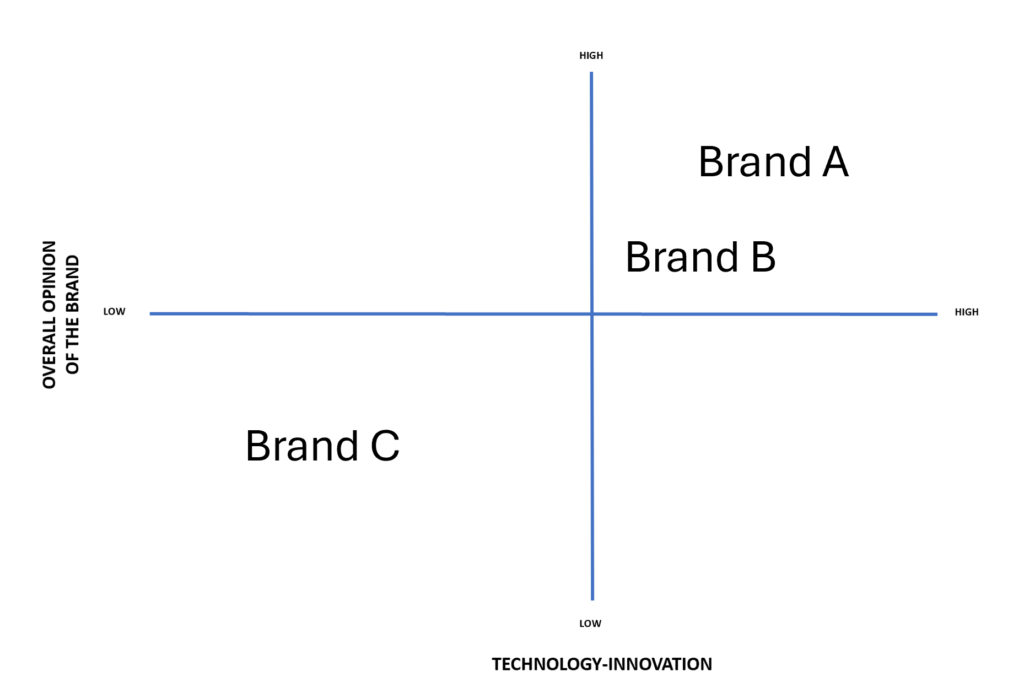Brand health research gives executives and researchers an understanding of consumer perception of their brand relative to the brands of their competitors. It is well understood that brands are shorthand notation, if you will, for consumers. Consumers use brands to simplify choices when it comes to purchases. The brand name not only represents the products offered under the brand, the perceived quality of those products, and the price of the products relative to consumer value, but also are associated with feelings of belonging, attitudes towards personal projections of being fashionable and informed, and almost at times embody human characteristics such as trustworthiness and reliability.
Studies of this kind should consider the rational and irrational thought process of consumers when designing and determining questions to ask in a brand health study, as executives and researchers need to know how various brand elements relate to consumer opinion of the brand. It is hoped that any study would confirm that these various elements of brand health are in alignment and can be nurtured through brand promotions. If not, actions can be taken to bring the brand elements into alignment.

Why might a brand health study be of interest? Companies considering acquisitions of competitors should be rightly concerned of the effect of maintaining an acquired brand under the company’s auspices. Can the brand contribute to profitability or is it more likely to cannibalize sales from existing products? Do the purchased brand’s products stand apart from the existing product line or will they confuse the consumer? Furthermore, is the acquired brand aligned with the company’s own brand quality, price, and value? And how does the acquired brand compare to the personal projections consumers will make regarding whether the choice is fashionable and informed, trustworthy, and reliable?
Companies might also consider this type of research if sales are falling. What is it in the consumer perception of the brand that is leading to this result? Is it product related? Is pricing not in line with competitors? Do consumers appreciate the value delivered by the product or service? Are there ways a company can control this outcome?

Figure 2: Brand A Exhibits Higher Share of Preference Relative to Other Brands Evaluated in the Optimal Pricing Zone
Marketing research uses several tools to understand brands. As in Figure 2 above, choice models, which model consumer preference for features and how these preferences link with brand and price are one type of research study that can be used to evaluate brand health. Notice in Figure 2 that although holding price constant, Brand A had higher consumer preference than all other brands.
Another type of brand health research can develop regression models based on rating scales, which use a dependent variable such as “overall opinion of the brand” to understand those brand attributes that have a significant role in shaping consumer opinion. Also, one would be remiss not to mention the commonly used tool of Top Box measurement, where customer Top Box ratings of a brand are measured against relative Top Box scores of competitors (see Figure 1). All these tools can be employed to better understand brand health, value, strengths, and weaknesses.
If used, these tools can deliver vital information of consumer beliefs about brand quality, value, product, pricing, and can demonstrate how a brand stacks up against its competitors. It can mean the difference between a healthy or unhealthy brand future. Failure to measure brand health increases risk, as consumers want to do business with reliable and trustworthy companies. After all, nobody was ever fired for choosing IBM.
